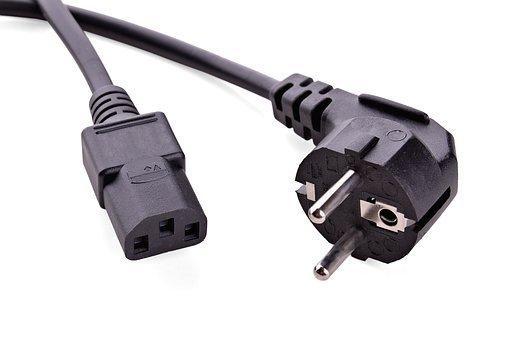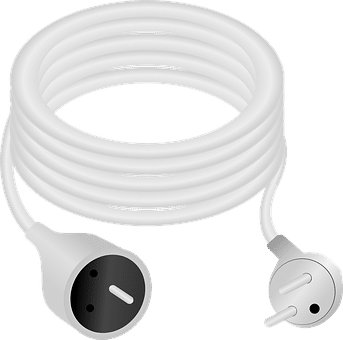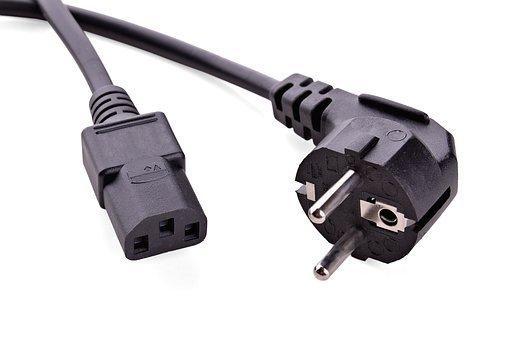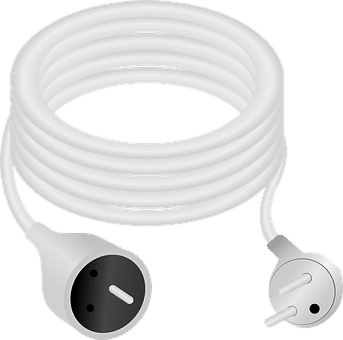Learning
How to Choose the Correct Extension Cords in Thailand

Extension cords are an essential requirement in modern homes and even workplaces. They allow you to use electrical devices conveniently without plugging those devices directly into the wall sockets. But despite their significance, most people don’t exercise due diligence while shopping for extension cords. They simply pick the next cord available, provided that the product looks like it can get the job done.
However, purchasing cheap and low-quality extension cords is a false economy in the long run. Depending on the nature of electrical appliances and gadgets you’re using the cord with, you may find yourself replacing your extension cords more often than you should. Worse yet, low-quality extension cords are a significant health hazard. That’s especially true for cords of the wrong sizes and specs. Electrical cord-related accidents kill scores of people and result in thousands of injuries every year.
One key consideration while shopping for extension cords is the size. And size denotes both the diameter/thickness/gauge and the length. In this post, we unveil a definitive guide into choosing the best extension cord sizes.

How Do Extension Cords Work?
Before we highlight the top factors to consider while shopping for an extension cord, it’s essential to begin by understanding how these devices work. Extension cords are made up of insulated wires, which transmit electrical current from the wall socket or other main outlet to an electrical appliance. The cords typically feature a plug on both ends.
Provided that you’re using a premium-quality extension cord and there are no significant electrical surges, then the cords should work just fine. However, a surge in the electric current could make the wires overheat and melt, causing malfunctions.
The extent of the resultant malfunctions depends primarily on the amount of excess electric current flowing through the wires. In most cases, the wires simply melt and cut the supply of electric current. But if you’re unlucky enough, the resulting current surge may trigger massive explosions and result in damages to both the extension cord and the electrical appliance on the other end.
Now, the size of your extension cord plays a crucial role in regulating the current flowing through it. Cords of the right length and gauge are highly effective at controlling the current flowing from the power source to the electrical appliance plugged into the cord.

Choosing the Right Extension Cord Size
Consider the Length
As we’ve already pointed out, the size of an extension cord is determined by both the wire’s length and gauge. Longer extension cords come with a range of benefits. Most notably, these cords make it possible to use your electrical appliances and gadgets within a relatively long radius of the main power outlet. But longer cords have their drawbacks too.
First, they cause entanglements, thereby increasing the risks of accidents. Longer extension cords also cause a drop in overall voltage. That can be a significant concern if using these cords with heavy-duty appliances. So, what’s the standard length of an extension cord?
The ideal length of an extension cord depends primarily on the power consumption needs of your electrical appliances. Light-duty devices like smartphones and laptops can work fine with longer cables. But for heavy-duty electrical appliances like refrigerators, the cord shouldn’t exceed 100 feet. Otherwise, you may need to upsize it.
Location and convenience are other factors that may influence the choice of an extension cord’s length. For instance, longer cords will serve you better when working outdoors than shorter ones.
Consider the Gauge
An extension cord’s gauge refers to the diameter or thickness of the actual copper wires carrying the current, not the thickness of the plastic or rubber coating. The gauge determines the amount of current that can flow through the cord without heating it.
Standard extension cord wire gauges are 18, 16, 14, 12, and 10. The lower the number, the thicker the gauge. And the thicker the gauge of an extension cord, the more effective it is in carrying electricity.
Balance the Length, Gauge, and Amps
Although the length and gauge of an extension cord are two different things, they should be considered side by side when shopping for an extension cord.
It may be tempting to purchase shorter cords, arguing that such wires are more reliable with heavy-duty electrical appliances. However, you probably won’t enjoy that reliability if the length is shorter, but the gauge is smaller. If you’re new to extension cords, consider investing in 12-gauge, 14-gauge, or 16-gauge cords.
For 12-gauge cords, you can comfortably go for a cord of length 50 – 100 feet. That combination can effectively power a 10 – 15 amps appliance. 14-gauge cords are slightly weaker than their 12-gauge counterparts. So, it goes that the cord length should subsequently be reduced. 14-gauge cords are better used with a cord of length 0 – 50 feet to power an appliance with 10 – 15 amps.
Lastly, 16-gauge cords can be used with a cord of length 0 – 100 feet. But such a small gauge can only handle loads of up to 10 amps.

Light-duty Vs. Heavy-duty Electrical Appliances
The common perception out there is that smaller electrical devices are light-duty, whereas larger appliances are heavy-duty. While there’s some truth to these assumptions, smaller gadgets do not always run on lower electric currents.
Take a case of an iron box and a desktop. An iron box is probably more than half the size of an average desktop. But if you analyze the electric consumption of these gadgets, you’ll realize that a desktop utilizes far less electricity. Based on the standards for choosing an extension cord discussed above, a desktop may work just fine with longer cords of smaller gauges. On the other hand, an iron box would require shorter cables of higher gauges.
So, what’s the right way to tell light-duty electrical appliances from heavy-duty ones?
Functionality is the most reliable differentiator between light- and heavy-duty electrical appliances. Generally, heat-generating gadgets require more electric current. Hence they are best used with higher-gauge cords. Using such devices with lower-gauge cords may result in heavy electrical load, potentially causing short circuits and explosions.
Examples of light-duty appliances include lamps and clocks. Smartphones, laptops, desktops, and audio-visual systems are classified as medium-duty gadgets, whereas refrigerators, freezers, dishwashers, ovens, iron boxes, and washing machines constitute heavy-duty ovens.

Final Word
There goes our definitive guide to choosing the correct cord sizes. As a parting shot, ensure the cord comes with built-in GFCI protection. This will help to prove against any shock hazards that could occur due to current surges.
















![Play Online Blackjack In Australia [2024]: Top 10 Online Australian Blackjack Sites 27 Play Online Blackjack in Australia [2024]: Top 10 Online Australian Blackjack Sites](https://www.chiangraitimes.com/wp-content/uploads/2024/03/word-image-303235-1-80x80.jpeg)













